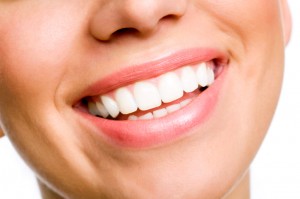 When we close our mouth, our teeth come in contact with each other, establishing what we call our bite or our dental occlusion. There is not much science to explain how most of us got our bite. As a child, our permanent teeth erupt out of the gums until they contact the adjacent and opposing teeth, stopping the eruption process. Studies have indicated that there is a neutral space between the muscles of the tongue and the lips that contributes to the position of the teeth. Some of us have our teeth straightened with braces that may make the teeth appear in line but that changes the natural bite.
When we close our mouth, our teeth come in contact with each other, establishing what we call our bite or our dental occlusion. There is not much science to explain how most of us got our bite. As a child, our permanent teeth erupt out of the gums until they contact the adjacent and opposing teeth, stopping the eruption process. Studies have indicated that there is a neutral space between the muscles of the tongue and the lips that contributes to the position of the teeth. Some of us have our teeth straightened with braces that may make the teeth appear in line but that changes the natural bite.
Over time, restorative fillings, crowns & bridges and wear can all alter the bite. When teeth are removed, the adjacent teeth shift to try and fill in the spaces almost always to the detriment of the bite. As the years go by, our bite (dental occlusion) can get worse resulting in bite problems, headaches, facial pain, neck pain and shoulder aches.
Bite optimization creates the best bite for the patient. The length and thickness of the lips, the jaw position, the sizes of the jaws, speech patterns, joint & neuromuscular problems and the cosmetic and restorative goals of the patient are all considered in order to develop the very best cosmetic effect and the overall dental health for our patient.
Working with a dentist who understands and respects these issues is key to optimal care. The smallest changes are now being recognized as very significant in optimized dental occlusion and optimized health.
As doctors, we focus on oral as well as systemic wellness. It is the strength of this relationship and the quality of communication and experience that influences the final outcome of nearly any dental treatment.
Complimentary Consultation for Bite Optimization
If you would like to know more about bite optimization, call today to schedule a complimentary consultation.